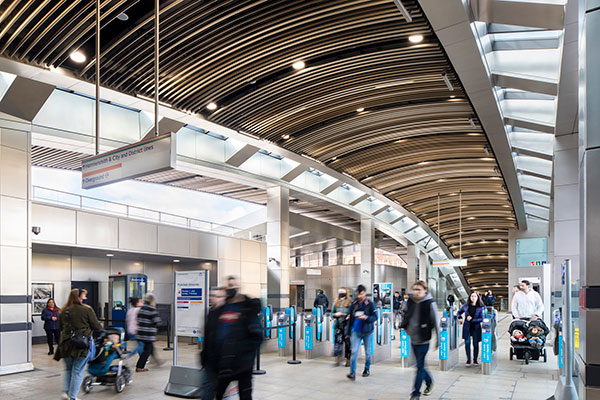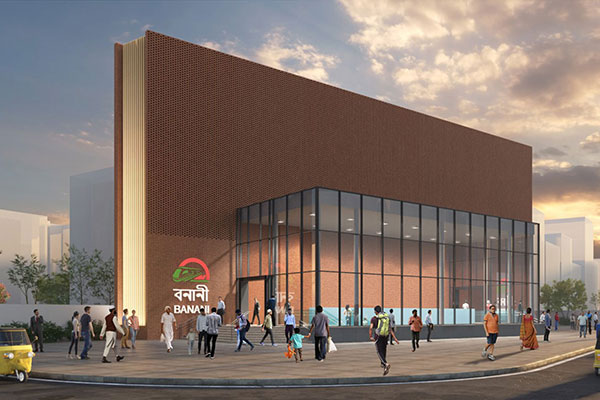Expertise
Simple design moves such as clear views to the platforms or gates make the departure experience easier. For arriving passengers, visual connections to the local area and an appreciation of the external climate all provide reassurance and orientation.
Creating these successful environments is not a simple a task given the extensive technical challenges of the transport sector; it takes a collaborative design philosophy to create a holistic solution which blends architecture and engineering to maximum effect. Our many successes in this are grounded in our inherent founding principles of collective working based on trust and respect between design professions.
How we can help
1. Low-carbon and active transport modes
From Toronto to Dhaka we are designing the infrastructure which will accelerate the shift from fossil fuel driven cars and buses to low-carbon and active transport modes. This includes university masterplans overlaid with networks consisting of an interchange hub at the entrance to the campus which connects to an evenly spaced distribution of nodes within a short walking distance of all destinations.
2. Transit Orientated Development
Tokyo is the unrivalled leader in Transit Oriented Development, and we have urban designers who designed and delivered key projects in that city. This experience, and similar accumulated in other locations around the world gives us unrivalled knowledge of what makes successful mixed-use communities focussed around and above transportation hubs.
3. Inclusive transport
Nippon Koei mobility team operate a MaaS platform which will transform the urban infrastructure of places around the world. Our access consultants, Human Space enable solutions which make good economic sense for operators, offer a range of benefits to enhance accessibility, equity and enhance the overall user experience for all passengers.
4. Transport interchanges
To entice drivers out of their cars, mass transit needs to be comfortable and convenient with friction-free transfer between modes at interchanges which feel safe, secure, and welcoming. Our BREEAM Excellent design of Whitechapel Station, London has ensured a smooth transition between the new Elizabeth line, the Tube (Metro) and the overground modes. The design is a sustainability beacon, utilising natural light and ventilation, modern construction techniques and low energy systems.
5. Activating our streets
The shift from car to mass transit opens up opportunities for streets and squares to be reclaimed by pedestrian and active travel. We are working with our clients to maximise the environmental benefits of these changes, as well as regenerating local communities and stimulating value in surrounding areas.
Case studies

Whitechapel Elizabeth Line Station
London, UK
Whitechapel station is an important interchange for both the Hammersmith & City and District lines and London Overground.

Dhaka Metro
Dhaka, Bangladesh
Dhaka is the sixth most densely populated city in the world. The numbers continue to surge; there are 400,000 migrant rickshaw drivers working in the city and 800,000 working in the textile industry.
